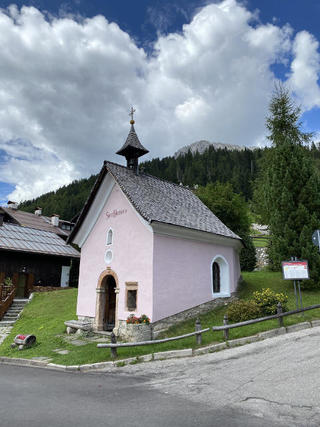
Bach Village
The Bach village gets its name from a nearby stream that, descending from the rocky cliffs of 'Olbe; separates the eastern and western villages. lt is the largest village of Sappada but architecturally neither its buildings nor its town layout are particularly noteworthy. Most of the old buildings, in fact, were destroyed on the 13th of September 1908 by a massive fire that broke out in a barn and quickly spread to the rest of the village.
Following this event, the village was reconstructed according to a rigidly geometrie plan. The new buildings were aligned along three major parallel rows complemented, uphill, by two more rows of rustic buildings which, overtime, also turned into residential homes.
In 1922, when the new road was built, its path crossed the village between the second and the third row depriving some houses of their small lawns. AII these changes, unfortunately, made the prospect of having a sizeable, usable space in what would eventually become Sappada's town center, virtually impossible. In reality, the post-reconstruction growth, Bach's relatively central position in the valley, and the extent of flat land around the village all played major roles in the community's extraordinary expansion. Most of the development took piace South and West of the originai center and was so far-reaching that the Bach village almost merged with the neigh boring Palù. Finally, in 1953, the relocation of the Sappada town hall to the Bach Village conclusively confirmed the role of this community as the urban and civil center of Sappada. The fire spared the chapel of S. Anthony of Padua, also known as Schantantònimaindl or Pòcharmaindl. You can still see this chapel today along the path of the old road. Built in 1726, it is the oldest religious building of Sappada.
Above and below the residential area there are also severaI small chapels; four of them are prayer sites and ex-voto resulting from popular devotion while the 1824 Gethsemani chapel, standing at the western end of the village, is ideally linked to the nearby Stations of the Cross path, whose chapels are spread uphill along the apposite slope of Muhlbach.
The only traditional buildings that survive are the residential Nìcklar house and the rural stable/hay-loft bearing the same name. Both are situated at the northern edge of the village and escaped the fire due to their isolated position, some distance from the village center.


